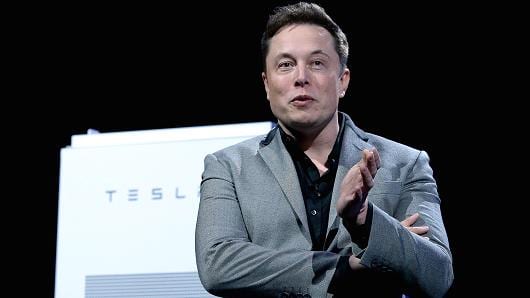The battery storage revolution is taking hold in Australia, and may even occur quicker than most pundits thought – despite lingering uncertainty about whether consumers will actually be saving any money in the short term.
Debate rages about the ability of battery storage – when added to rooftop solar installations – will deliver an attractive return on investment. For some it already does, as this farmer discovered.
But it seems that many consumers don’t particularly care – installers say they are being flooded with enquiries, and customers want them even if they are told they won’t save money.
According to Nigel Morris, the head of solar and battery storage installer Roof Juice, battery storage installations are running at about 200 a month.
Origin Energy, one of the big retailers that has signed up for the Tesla Powerwall and other battery storage technologies, says it has installed a few, but has interest from 2,000 consumers – demand which it hopes to satisfy within the next few months.
Stefan Jarnason, the CEO of software developer and systems integrator Solar Analytics, agrees with those assessments. He estimates that installation rates will run at about 4,000 to 5,000 in 2015 – before surging ten-fold in 2016 to around 40,000. That is when the industry takes hold.
There are many reasons why battery storage is popular – the ability to exercise consumer choice, to have greater independence, to stick it up the big corporations, to capture the benefits of their solar systems (as feed in tariffs decline), and to do their bit for emissions abatement, particularly as the federal government policies cause a rise in national emissions.
NSW is expected to be the biggest market initially, particularly when 140,000 households lose their premium feed in tariff at the end of this year. Steve Blume, from the Australian Energy Council, says 60,000 households may choose battery storage in the first year after losing the premium tariffs.
 And two other things have captured the imagination of consumers. One is this man, Elon Musk (pictured right) the founder and CEO of Tesla, who has managed to reduce the complexity of battery storage to a brand name, and a choice of colours.
And two other things have captured the imagination of consumers. One is this man, Elon Musk (pictured right) the founder and CEO of Tesla, who has managed to reduce the complexity of battery storage to a brand name, and a choice of colours.
As Jarnason told a solar conference last weekend, Musk has managed to sell $1 billion of battery storage devices, the Powerwall and the Powerpack, even before he had a product, and before he had even built a factory.
The second event is publicity. According to Glen Morris, one of the country’s leading experts in battery storage, and a vice president of the Australian Storage Council, the recent Catalyst program on ABC TV, which featured battery storage, has sparked huge interest in the technology.
John Grimes, the chief executive of the Energy Storage Council, says Australia is at the leading edge of the biggest transformation in the global energy industry. He estimates that two thirds of solar installers are being asked about battery storage.
“Australia can learn a lot and take these learnings to the world,” Grimes told the Queensland Energy Storage Summit on Wednesday. “A coronation is under way. Technology is giving power to the people and customers are no longer the voiceless observor of energy technology.”
The CSIRO recently updated its study which shows that up to half of all electricity will be generated on site – in homes, businesses and within communities, within a few decades. Depending on how the incumbent industry adapts, this will create a new integrated grid, or one third of all consumers will leave the grid.
“This transformation is already under way,” said Mark Patterson, the head of grid and renewable energy systems at CSIRO Energy. “We will be the first low carbon economy in the world if we can manage this.”
Glenn Walden, the head of emerging markets and technologies for Ergon Energy, the biggest network by land area in the country, agreed: “The future is closer than we think.”










